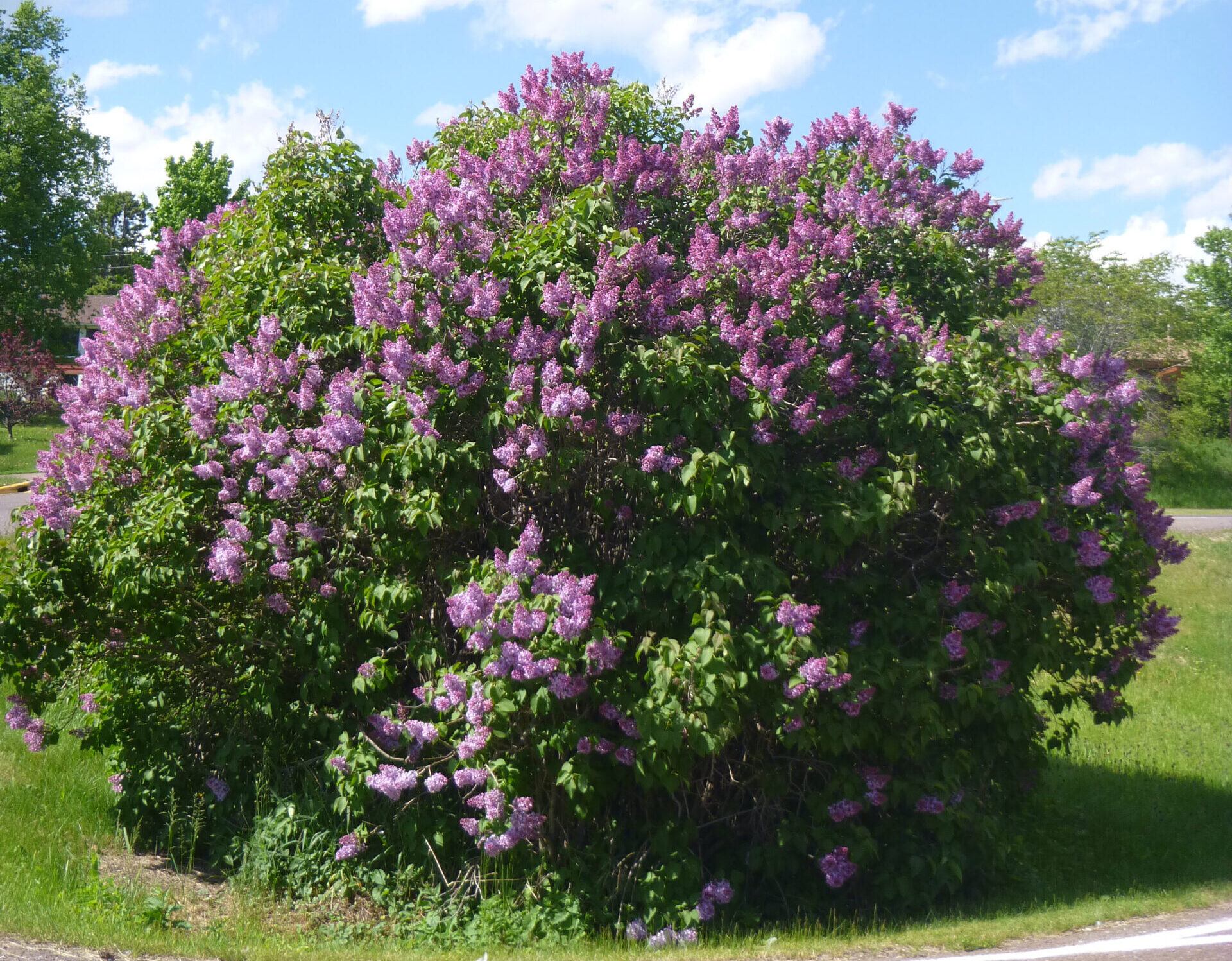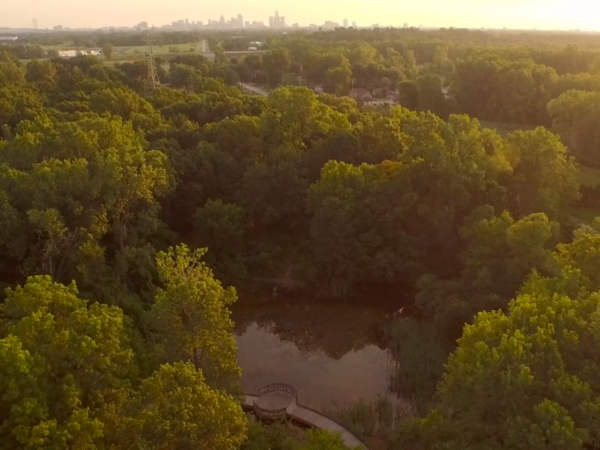
Editor’s Note: “Nibi Chronicles,” a monthly Great Lakes Now feature, is written by Staci Lola Drouillard. A direct descendant of the Grand Portage Band of Ojibwe, she lives and works in Grand Marais on Minnesota’s North Shore of Lake Superior. Her two books “Walking the Old Road: A People’s History of Chippewa City and the Grand Marais Anishinaabe” and “Seven Aunts” were published 2019 and 2022, and she is at work on a children’s story. “Nibi” is a word for water in Ojibwe, and these features explore the intersection of indigenous history and culture in the modern-day Great Lakes region.
Just before sunup, I remembered great grandma’s lilac. It was early November 2019 and downtown Grand Marais was preparing for a two-year highway project. Trees—big and small, were being marked for disposal and cut down all along the Highway 61 corridor.
There was a lot of public angst over a row of old elm trees that lined each side of the highway in the central part of town. Some of the only local elms, they had dodged the Dutch Elm epidemic of the 1970s, only to meet their end at the hands of the highway department, who treat old trees with less importance than new sidewalks and wider lanes.
That early morning when the elms were scheduled to come down, it occurred to me that my great-grandma’s 100-year-old lilac tree was also in the path of destruction. This was a symbolic tree, which I use as metaphor in the book Walking the Old Road—a reminder that heirloom lilacs and descendants of Chippewa City are still here.
That old lilac tree was gigantic. Perfectly round, amazingly tall and it reliably bloomed every June in a burst of purple. It grew where her house once stood, at the eastern edge of town close to the place where several Drouillard relatives lived until the State of Minnesota took their land through eminent domain as part of highway expansion in the late 1920s. And even though the people and houses were all gone, that lilac held steady and strong.
I drove to town, ready to take on the MNDOT crews and stand guard, if necessary. But I was too late. It was 7:30 a.m. and they had already chopped great-grandma’s lilac down to the ground. Inconsolable, I scrambled to do whatever I could to salvage what remained.
Because winter was coming, I knew the roots had to be moved before freeze-up, so I called my friend Mike McMillan, a local landscaper, to ask if he could help. With heavy equipment, Mike was able to lift the root clump up and out of the ground. He covered it with mulch for the winter and advised that, “lilacs are usually really tough. We’ll just have to wait and see.”
Aunties and presidents agree
Of course, lilacs (unlike the Anishinaabeg) are not native to North America. The most common varieties originated far away in olive-country, because originally, lilacs and olive trees were Balkan cousins. We know that the first “American” lilacs were planted around 1750 at the governor’s estate in New Hampshire, and after that became a favorite of presidents, first ladies, great-grandmas and aunties—like my Aunt Lila whose lilacs formed a fortress around her house in Grand Marais.
From the East Coast, these heady florals migrated westward, just like the ancient Anishinaabeg did, mewizha—a long time ago. You will find lilacs wherever people once lived, including very remote places, deep into Canadian territory along Lake Superior’s North Shore.
A friend who owns land across the border has some 100-year-old lilacs that bloom every year, the remains of a garden once planted by the Maymashkawaush family. And these old lilacs are not just a sign of houses, but also outhouses. It was often tradition to plant a lilac on top of a “spent” latrine hole, in order to avoid digging a new hole on top of the old. This revelation makes one think differently about our history on the land and the full extent of what human beings leave behind.
Welcome news
In the late spring of 2020, I got a voicemail from my friend Mike, letting me know that new leaves were emerging from under the mulch. Great-grandma’s lilacs had made it through the winter!
In late summer, after the plant had time to recover and make new roots, we carefully divided it and tried to find homes for these hardy, new/old lilacs. Several cousins happily made room for them, from Grand Portage to Duluth, and my sister also planted some in her yard in Minneapolis. I dug two plants into our yard at Good Harbor Hill, and this spring, three years after they were transplanted, I’m hopeful that the plant’s ancient memory of how to bloom in June will produce flowers for the first time since the roots were traumatized and upended.
Great-grandma Anakwad’s lilac legacy is tough, indeed. This week I visited the Chippewa City cemetery where she is buried. Not far from her grave, my cousin Carol Hackett had planted a root clump of lilacs next to her grandmother Josephine Zimmerman’s headstone. Josephine was my grandpa Fred’s oldest sister, he being the youngest of twelve children raised by great grandmother Elizabeth in Chippewa City.
Planting lilacs at the cemetery was a bit of a risk because there aren’t always relatives there to make sure deer aren’t eating the leaves, or that the plant is getting watered regularly. But there they were—leaves of deep green with a tinge of purple—a symbol of what was, and what eventually will be.
The lesson and symbolic potency of lilacs now runs much deeper for me. As a writer in search of an apt metaphor for the survival of a people, the resilience of family and how to come to terms with the traumas and losses of the past, that old tree has proven repeatedly, that life doesn’t give up easily and that against all odds, we are still here.
Mii sa iw.
Catch more news at Great Lakes Now:
Nibi Chronicles: Restoring what was lost in translation, one place name at a time
Nibi Chronicles: Greeting Old Man Maple during the Sap Boiling Moon
Featured image: Lilac bush. (Photo Credit: Staci Lola Drouillard)
1 Comment
-
Wonderful story. I grew up with lilacs planted by my grandparents and always loved lilacs. I can’t believe they cut down elm trees! Progress can be blind.




